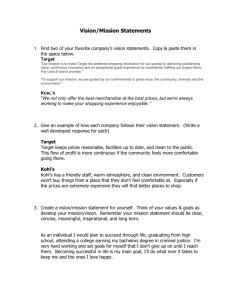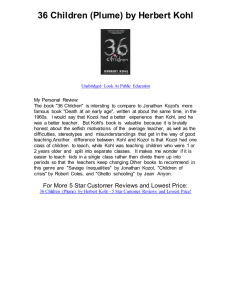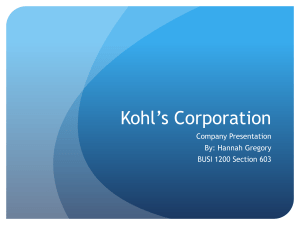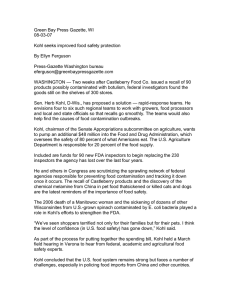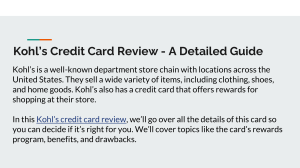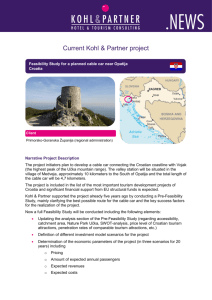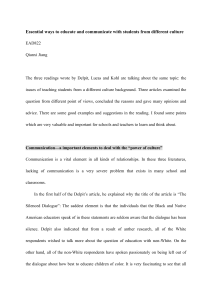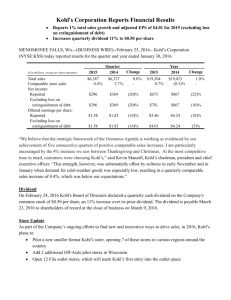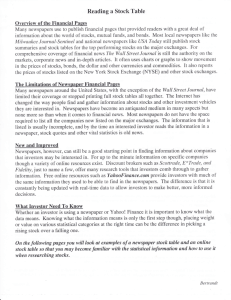Public/Industry Study Folders/Retail Store Industry Study
advertisement
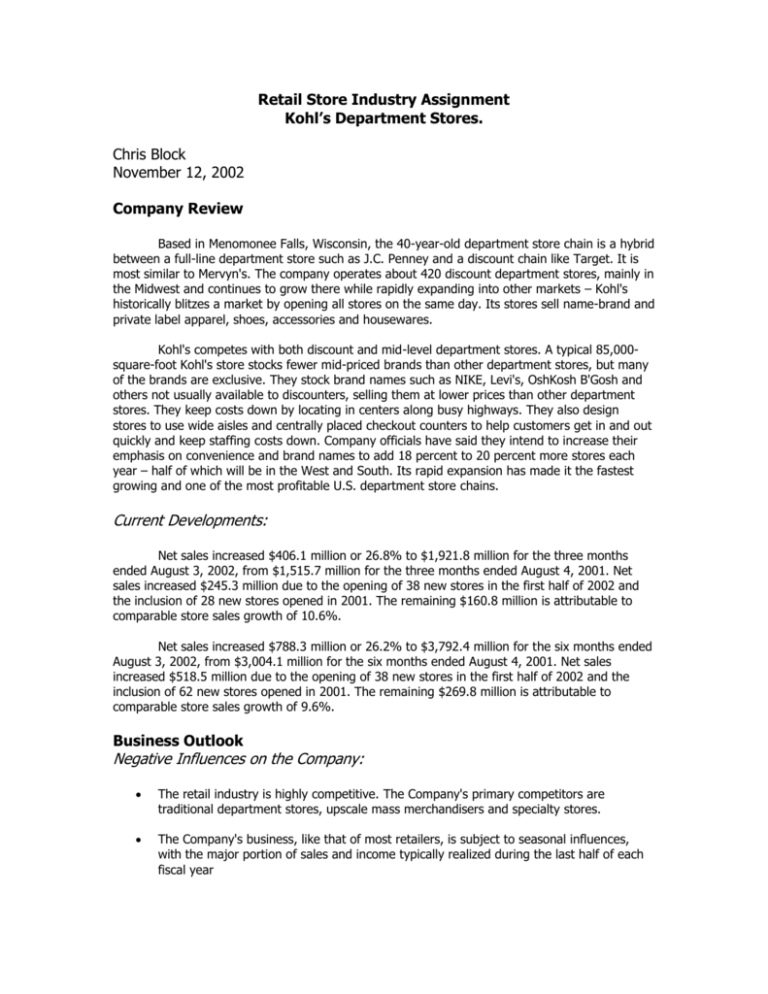
Retail Store Industry Assignment Kohl’s Department Stores. Chris Block November 12, 2002 Company Review Based in Menomonee Falls, Wisconsin, the 40-year-old department store chain is a hybrid between a full-line department store such as J.C. Penney and a discount chain like Target. It is most similar to Mervyn's. The company operates about 420 discount department stores, mainly in the Midwest and continues to grow there while rapidly expanding into other markets – Kohl's historically blitzes a market by opening all stores on the same day. Its stores sell name-brand and private label apparel, shoes, accessories and housewares. Kohl's competes with both discount and mid-level department stores. A typical 85,000square-foot Kohl's store stocks fewer mid-priced brands than other department stores, but many of the brands are exclusive. They stock brand names such as NIKE, Levi's, OshKosh B'Gosh and others not usually available to discounters, selling them at lower prices than other department stores. They keep costs down by locating in centers along busy highways. They also design stores to use wide aisles and centrally placed checkout counters to help customers get in and out quickly and keep staffing costs down. Company officials have said they intend to increase their emphasis on convenience and brand names to add 18 percent to 20 percent more stores each year – half of which will be in the West and South. Its rapid expansion has made it the fastest growing and one of the most profitable U.S. department store chains. Current Developments: Net sales increased $406.1 million or 26.8% to $1,921.8 million for the three months ended August 3, 2002, from $1,515.7 million for the three months ended August 4, 2001. Net sales increased $245.3 million due to the opening of 38 new stores in the first half of 2002 and the inclusion of 28 new stores opened in 2001. The remaining $160.8 million is attributable to comparable store sales growth of 10.6%. Net sales increased $788.3 million or 26.2% to $3,792.4 million for the six months ended August 3, 2002, from $3,004.1 million for the six months ended August 4, 2001. Net sales increased $518.5 million due to the opening of 38 new stores in the first half of 2002 and the inclusion of 62 new stores opened in 2001. The remaining $269.8 million is attributable to comparable store sales growth of 9.6%. Business Outlook Negative Influences on the Company: The retail industry is highly competitive. The Company's primary competitors are traditional department stores, upscale mass merchandisers and specialty stores. The Company's business, like that of most retailers, is subject to seasonal influences, with the major portion of sales and income typically realized during the last half of each fiscal year The impact of inflation on labor and occupancy costs can significantly affect Kohl’s. Positive Influences on the Company: Central to the Company's pricing strategy and overall profitability is a culture focused on maintaining a low cost structure. Critical elements of this low cost structure are the Company's unique store format, lean staffing levels, sophisticated management information systems and operating efficiencies resulting from centralized buying, advertising and distribution. Kohl's introduced on-line shopping on the Company's existing web-site in 2001. Designed as an added service for customers who prefer to shop from their homes, the web-site offers key items, best selling family apparel and home merchandise. The site is designed to provide an easy-to-navigate, on-line shopping environment that compliments the Company's in-store focus on convenience. Convenience is another important cornerstone of Kohl's business model. At Kohl's, convenience begins before the customer enters the store, with a neighborhood location close to home. Other aspects of convenience include easily accessible entry, knowledgeable and friendly associates, wide aisles, a functional store layout, shopping carts/strollers and fast, centralized checkouts. Future Drivers of Growth Kohl’s will be entering the southwest market with 40 stores in Los Angeles, Phoenix and Las Vegas in 2003. Past history has shown great success in new markets such as the South and East Coast (Boston, Houston & Nashville, 2000–2002). Management is focused on a 20% increase in both net sales and net income per year. (realized 21.7% and 33.2% respectively in 2001) Management plans on continuing successful strategy of blending new store openings in both new and existing markets. (about 50/50) Existing stores are remodeled every 7-9 years keeping appearances fresh and current SSG Judgments, Results and Recommendation Historical sales growth: 24.2% Est. future sales growth capped: 20% Historical EPS growth: 31% Est. future EPS growth capped: 20% % Pretax Profit on Sales average for last 5 years: 9.2, trend UP % Earned on Equity, average for last 5 years: 16, trend UP Present price of 71.52 is not in the buy range. I recommend placing KSS on watch list as year low 41.95 is within Buy range.
